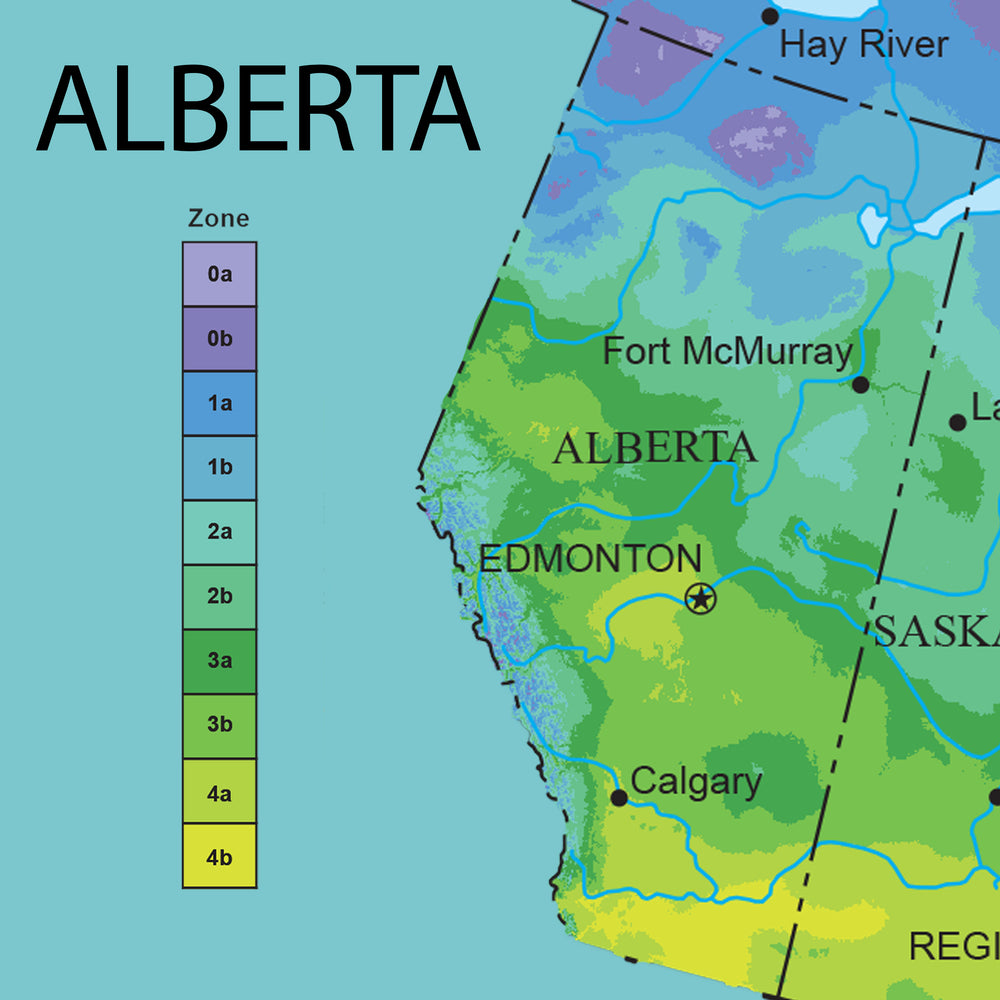Image from Natural Resources Canada
Characteristics of Alberta Planting Region
Alberta has a predominantly continental climate and experiences more sunshine than any other province in Canada, averaging 312 sunny days annually. Across the region, winters are typically dry, cold, and sunny, while summers can be warm and wet, with long bright days.
The average elevation of this region is 975m above sea level, and the province is known to have the most comfortable weather year-round than any other area in Canada.
Although this may vary across the province, on average, the frost-free growing season will begin towards the end of May and finish around mid-September. However, it’s always best to check the exact dates for your location.

Southfork Lakes Barnaby Ridge Crowsnest Pass, Alberta, Canada | Photo by Tiago Nakamura on Unsplash
Challenges of Growing in Alberta
1. Short growing season
Albertans are subjected to limited growing seasons with a brief peak period for gardening between the months of June and September. It’s important to monitor the weather and utilize a combination of indoor and outdoor gardening to extend this growing period.
2. High Altitude
The high-altitude mountainous regions of Alberta may experience a range of challenging growing conditions such as drastic temperature changes, low humidity, poor soil characteristics and more.
Waterton Park mountains, Alberta, Canada | Photo by Igor Kyryliuk on Unsplash
The Benefits of Using a Greenhouse in Alberta
Although the frost-free timeframe may be relatively short, a greenhouse will help extend the growing season in this region by several months. Alberta’s sunny climate pairs perfectly with a greenhouse by trapping the warmth and regulating the temperature inside throughout the colder seasons. Not only is this a wonderful way to maximize your growing time, but it also allows you to grow a variety of other plants that may struggle in an outdoor setting.
1. Extend your Growing Season
-
Without a Greenhouse:
Alberta’s planting season tends to last around 3-4 months each year. This short timeframe means many vegetables will be unable to reach maturity before the first frost without some indoor growing assistance.
-
With a Greenhouse:
Enjoy fresh vegetables well beyond the typical growing season by utilizing a greenhouse. Your planting season can extend to around 7-9 months annually, with the potential for even longer with Alberta’s sunny weather.
Learn more about specific growing dates for your area and the best vegetables to plant in each part of Alberta.
Customer images of the Sungrow greenhouse in Athabasca, Alberta, Canada
2. Grow a Wider Variety of Vegetables Without a Greenhouse:
- Outdoor gardeners are more limited in their options due to shorter growing timeframes. However, some vegetables that will grow comfortably in Alberta’s outdoors include:
- Turnips
- Swiss Chard
- Spinach
- Radishes
- Lettuce
- Kale
- Beets
-
Peas
-
With a Greenhouse:
The short planting seasons in this region make Alberta a prime candidate for greenhouse growing. Additionally, the sunny climate will keep your greenhouse warm and allow your plants to flourish.
Recommended vegetables for greenhouse growing include:
- Broccoli
- Brussel sprouts
- Cabbage
- Cauliflower
- Cucumbers
- Onions
- Leeks
- Bell Peppers
- Pumpkins
- Gourds
- Squash
- Zucchini
- Tomatoes
- Watermelon
- Cantaloupe
- Herbs
- Sweet Corn
- Eggplant
- Potatoes
- Carrots
Homegrown carrots | Photo by Markus Spiske on Unsplash
Why Planta Greenhouses?
- Wind resistant up to 65 mph (learn more about how our greenhouses hold up in high-altitude climates).
- Withstands a snow load of up to 98 psf (480kg/square meter).
- Made with a heavy-duty galvanized steel frame.
- Polycarbonate panels provide 100% protection against UV rays.
- The Sungrow greenhouse is bell-shaped - allows the wind, snow, and hail to slide off the sides.
- Extendable (Sungrow, Sigma and Farmer models can be extended beyond 100ft)
- Made in Europe and are exclusively imported
- Maintenance-free





